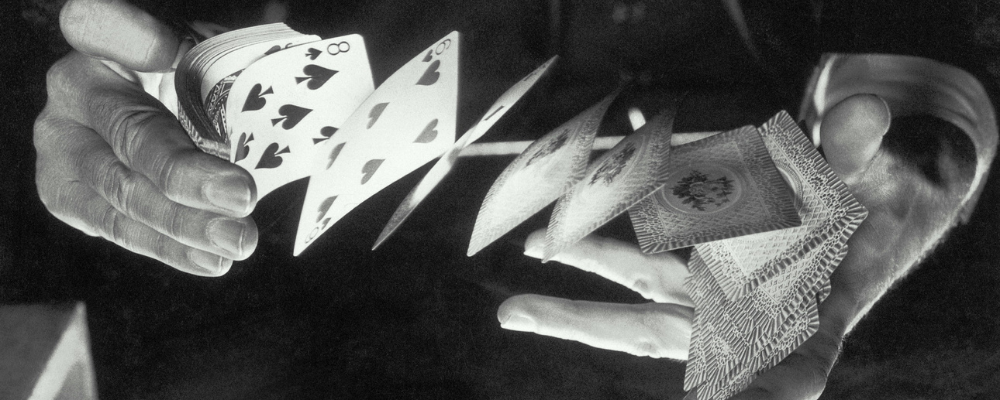Las Vegas, the city of lights, glamour, and magic, is a fitting backdrop for the 35th Annual ACFE Fraud Conference. As I wandered through the bustling streets, filled with the allure of magic shows and grand illusions, I couldn’t help but draw parallels between the sleight of hand used by magicians and the deceptive tricks employed by fraudsters. Both magicians and fraudsters rely on misdirection, illusion, and a dash of psychology to achieve their goals. However, while magic is meant to entertain, fraud aims to deceive and harm. In this blog post, we’ll explore the fascinating world of fraud through the lens of magic, uncovering illustrative cases that reveal the tricks of the trade.
The Art of Misdirection
Magic’s Misdirection: In magic, misdirection is the art of diverting the audience’s attention to conceal the method behind a trick. A magician might draw your gaze to their right hand while the left hand performs the real action.
Fraud’s Misdirection: Similarly, fraudsters use misdirection to distract victims from their deceit. Take the infamous case of Enron, where complex financial statements and off-balance-sheet entities masked the company’s dire financial situation. Executives used intricate accounting tricks to create the illusion of profitability, diverting attention from the reality of impending bankruptcy.
Key Lesson: Just as magicians use misdirection to entertain, fraudsters use it to deceive. Vigilance and skepticism are crucial in seeing through these illusions.
Creating Illusions
Magic’s Illusions: Magicians are masters at creating illusions that seem impossible. They make objects disappear, saw people in half, and levitate in mid-air, all while convincing the audience of the impossible.
Fraud’s Illusions: In the realm of fraud, creating illusions is about fabricating false realities. Consider the case of Bernie Madoff, who orchestrated one of the largest Ponzi schemes in history. Madoff created the illusion of consistent, high returns on investments, attracting thousands of investors. The reality was that new investors’ funds were used to pay returns to earlier investors, a house of cards that eventually collapsed.
Key Lesson: Fraudsters, like magicians, rely on creating believable illusions. Scrutinizing the underlying details can help uncover the truth behind the façade.
The Sleight of Hand
Magic’s Sleight of Hand: Sleight of hand involves deft, often imperceptible movements by the magician that enable the execution of tricks. These movements are so subtle that the audience remains unaware of how they were deceived.
Fraud’s Sleight of Hand: In financial fraud, sleight of hand can take the form of subtle manipulations in financial records. An illustrative case is that of WorldCom, where executives understated expenses and inflated revenues through creative accounting. These subtle changes were designed to mislead investors and regulators, making the company appear more profitable than it was.
Key Lesson: Just as a magician’s sleight of hand can deceive the eye, a fraudster’s subtle manipulations can mislead even the most experienced professionals. Detailed and diligent review processes are essential.
The Power of Psychology
Magic’s Psychology: Magicians understand human psychology and use it to their advantage. They know how to exploit cognitive biases, such as the tendency to focus on the most dramatic elements of a performance.
Fraud’s Psychology: Fraudsters also leverage psychology to exploit their victims. In the case of the Theranos scandal, Elizabeth Holmes used charisma and the promise of revolutionary technology to gain the trust of investors and partners. She created a narrative so compelling that it overshadowed the lack of concrete results, leading to massive investments based on little more than confidence and allure.
Key Lesson: Understanding the psychological tactics used by fraudsters can help in developing defenses against them. Critical thinking and independent verification are key to avoiding manipulation.
Unmasking the Tricks
As fraud fighters, our role is akin to that of a magician’s skeptical audience member, keen on uncovering the secrets behind the tricks. Here are some strategies to unmask fraud:
- Educate and Train: Continuous education on the latest fraud tactics and schemes is vital. Understanding the common tricks can help in identifying them quickly.
- Implement Strong Controls: Robust internal controls and regular audits can catch subtle manipulations and prevent fraudulent activities.
- Foster a Culture of Integrity: Encouraging ethical behavior and providing channels for reporting suspicious activities can deter potential fraudsters.
- Utilize Technology: Advanced data analytics and forensic tools can detect patterns and anomalies that might indicate fraud.
Conclusion
Just as the magic shows of Las Vegas captivate and amaze, the world of fraud can bewilder and deceive. However, unlike magic, fraud has real-world consequences that can devastate individuals and organizations. By drawing on the lessons from both magicians and fraudsters, we can sharpen our skills, enhance our vigilance, and ultimately, unmask the illusions that fraudsters create. As we continue to “Shine On” in our fight against fraud, let’s remember that the best way to combat deception is with knowledge, integrity, and a keen eye for the truth.





